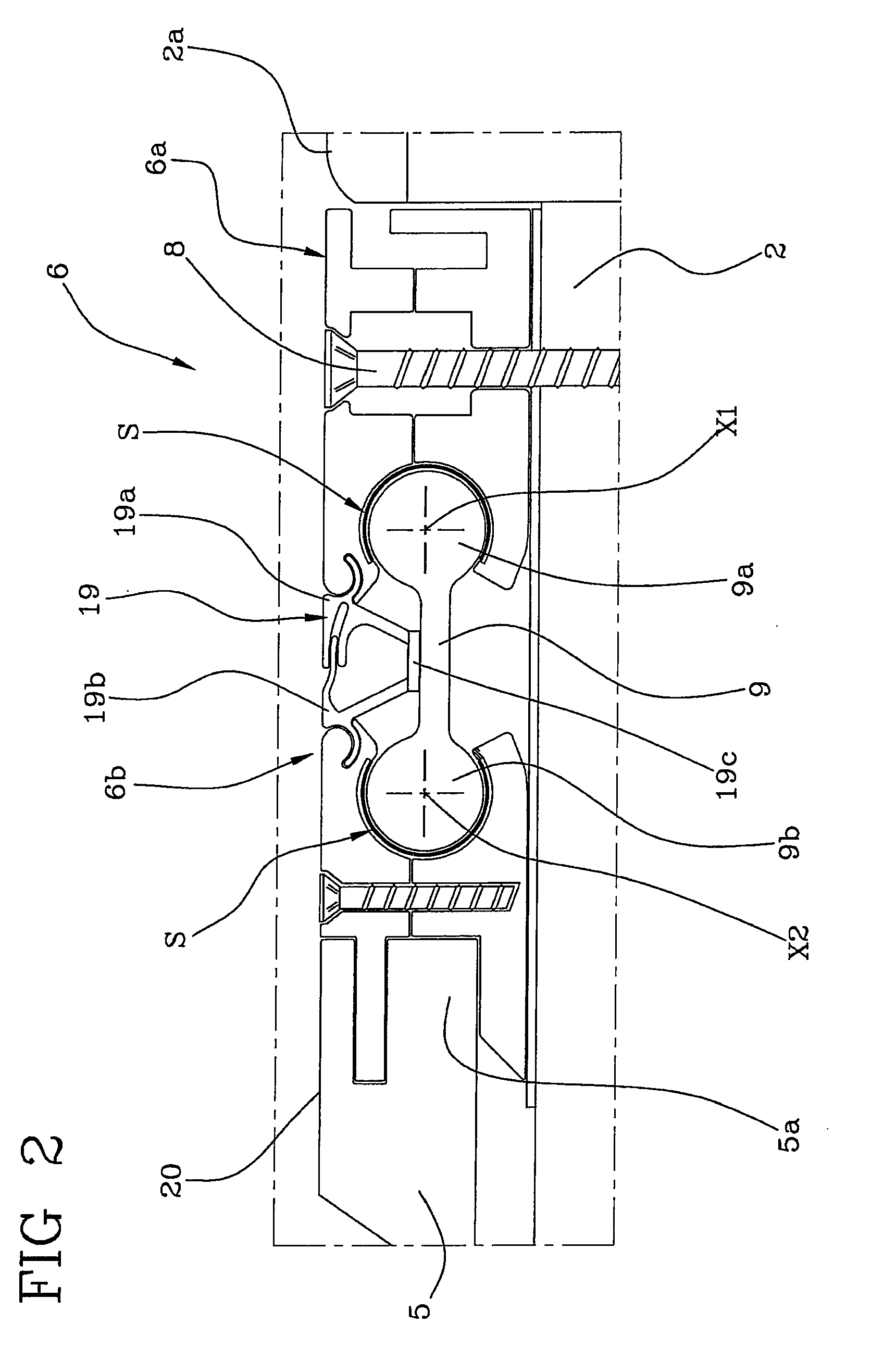Aseismic joint
a technology of seismic joints and joints, applied in the direction of couplings, vibration dampers, building components, etc., can solve the problems of structural elements, oscillations are subject to cracking, permanent damage or even structural yielding, and users who have to opera
- Summary
- Abstract
- Description
- Claims
- Application Information
AI Technical Summary
Benefits of technology
Problems solved by technology
Method used
Image
Examples
first embodiment
[0060]According to the invention shown in FIG. 3, the movable element 11 is directly connected, preferably in a stiff manner, to the second end 5b of the covering element 5. Under this circumstance, possible oscillating movements of the covering element 5 relative to the second anchoring portion 7a, and therefore to the second structural element 3, are allowed due to deformability of the concertina-shaped element 12 that is able to bear bending deformations of its own at least at an end thereof connected to the movable element 11. In particular, the concertina-shaped element 12 has a curved end 12e which is insertable by friction fit into a corresponding seat of the movable element 11.
second embodiment
[0061]In accordance with the invention, shown in FIG. 4, the second interconnecting portion 7b comprises a second connecting-rod element 16 operatively acting between the movable element 11 and the second end 5b of the covering element 5 to allow relative rotations between the latter, even of high extent.
[0062]In accordance with the view in FIG. 4, the second connecting-rod element 16 has a first end 16a hinged on the movable element 11, and a second end 16b, opposite to the first one 16a, hinged on the second end 5b of the covering element 5. Said first 16a and second 16b ends of the second connecting-rod element 16 therefore define as many connecting hinges between the second connecting-rod element 16 and the movable element 11 and second end 5a of the covering element 5, respectively.
[0063]Under this circumstance, the first 16a and second 16b ends of the second connecting-rod element 16 rotate around a third “X3” and a fourth “X4” rotation axis respectively, which axes are differ...
PUM
 Login to View More
Login to View More Abstract
Description
Claims
Application Information
 Login to View More
Login to View More - R&D
- Intellectual Property
- Life Sciences
- Materials
- Tech Scout
- Unparalleled Data Quality
- Higher Quality Content
- 60% Fewer Hallucinations
Browse by: Latest US Patents, China's latest patents, Technical Efficacy Thesaurus, Application Domain, Technology Topic, Popular Technical Reports.
© 2025 PatSnap. All rights reserved.Legal|Privacy policy|Modern Slavery Act Transparency Statement|Sitemap|About US| Contact US: help@patsnap.com



